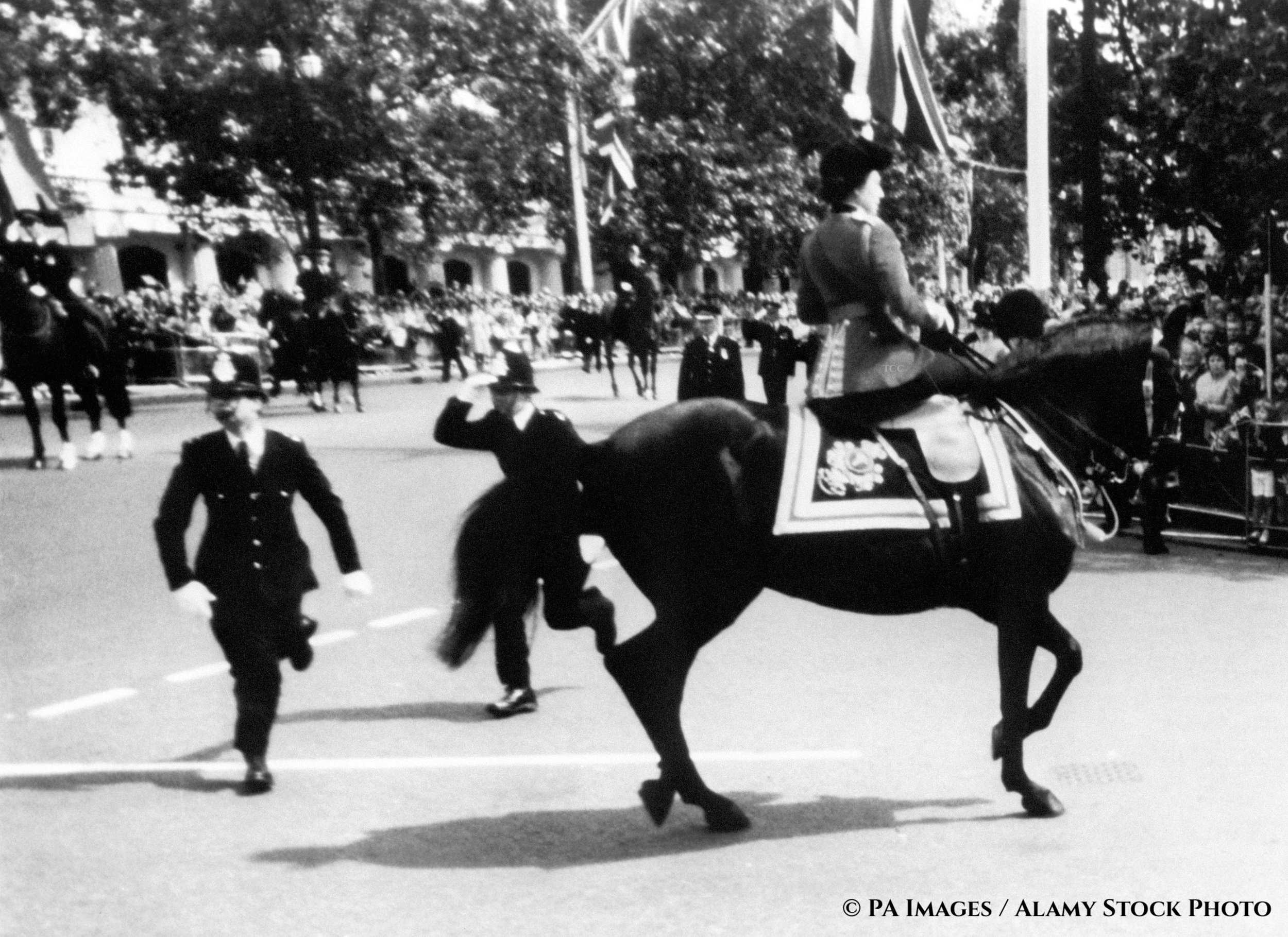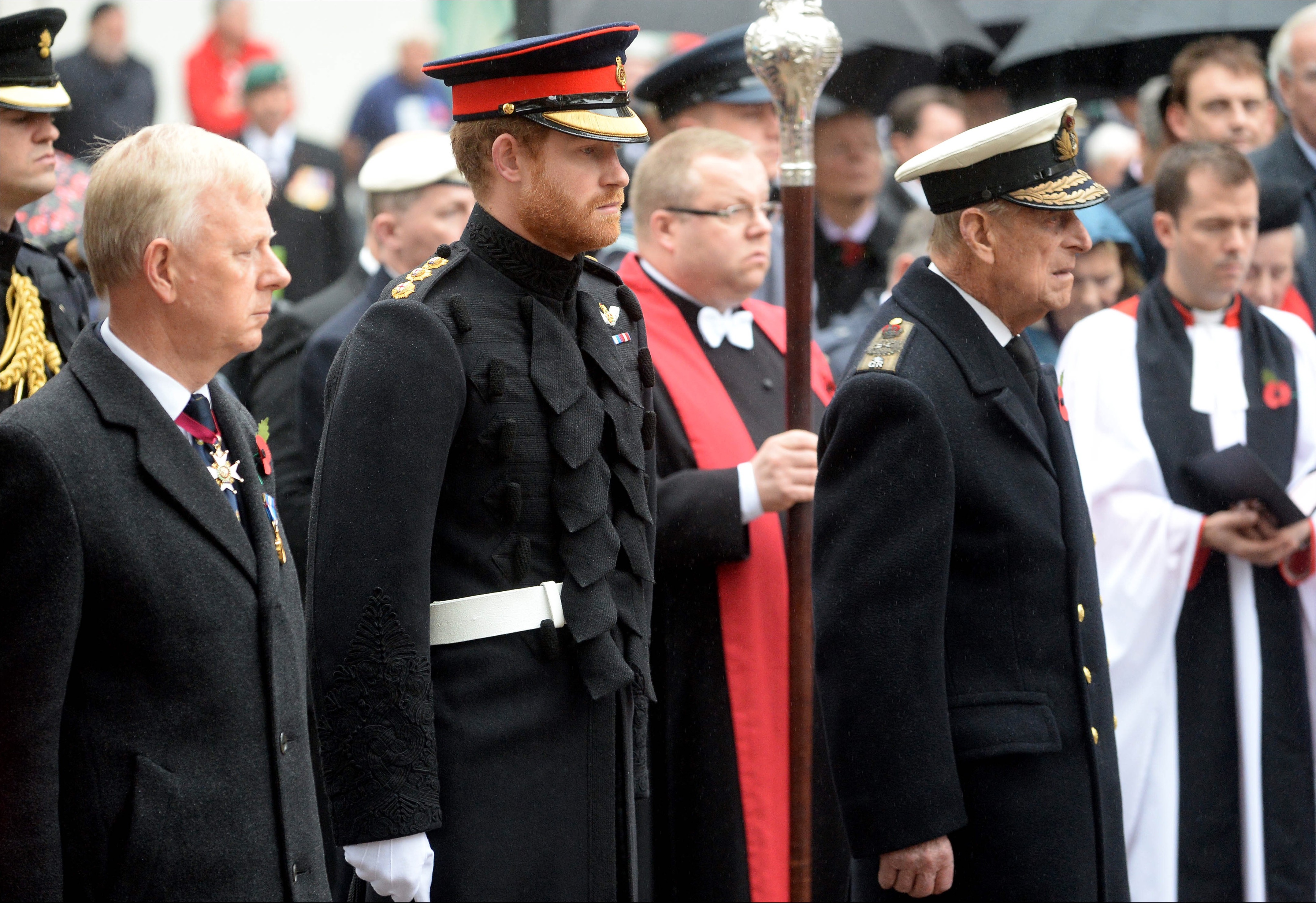is often an occasion that is filled with pomp and ceremony, where large crowds gather on The Mall in the hope of seeing members of the Royal Family, either on horseback or in a carriage, as they mark the Monarch’s birthday.
However, Trooping in 1981 was overshadowed by an assassination attempt on Elizabeth II.
What happened during the assassination attempt?
The day began as most Trooping the colour ceremonies do, with the royal party leaving the palace just before 11am for the journey down the Mall.
But 1981 was different; the Queen wore her Welsh Guards uniform to honour that year’s trooping trooping, and was followed in a carriage by her soon-to-be daughter-in-law, Lady Diana Spencer. She was to marry Prince Charles just a few weeks later.
Elizabeth II was riding on horseback down the Mall, when 17-year-old Marcus Sarjeant fired six blank cartridges at the Queen as she rode past, turning into Horseguards.
The shots resulted in Burmese – the Queen’s horse – starting in distress. Elizabeth was, however, able to bring her 19-year-old mare back under her control within a few seconds, an expert horsewoman.
The Queen had ridden Burmese sidesaddle during her birthday parades since 1969, the horse being a gift from Canada.
Who had tried to assassinate the Queen?
Sarjeant, who was from Kent, had previously joined parts of the British military but had little success in his career, and then became a member of the Anti-Royalist movement in 1980.
After he was unable to buy ammunition for his father’s handgun, Sarjeant ordered two imitation Colt Python revolvers, which could only fire blanks.

Prior to Trooping the Colour, he sent a letter to Buckingham Palace stating: ‘Your Majesty. Don’t go to the Trooping the Colour ceremony because there is an assassin set up to kill you, waiting just outside the Palace’.
But the letter arrived three days after the incident.
As he was seized by police, the young man told them: ‘I wanted to be famous. I wanted to be a somebody’.
During questioning, Sarjeant stated that he had been inspired by the assassination of Beatles musician, John Lennon, in 1980 and the previous attempts on the lives of President Ronald Reagan in March, and Pope John Paul II in May. The disturbed youth was partially drawn to the attention that John Lennon’s assassin, Mark David Chapman, had received.
What happened to Marcus Sarjeant?
Sarjeant went on to become the first person since 1966 to be prosecuted under the Treason Act 1842, and was brought to trial before the Lord Chief Justice on 14th September 1981.
He pleaded guilty and was sentenced to five years’ imprisonment, with the Lord Chief Justice stating that ‘the public sense of outrage must be marked. You must be punished for the wicked thing you did’.
He was found guilty of an offence under Section Two of the Treason Act in that he ‘wilfully discharged at or near the Queen a gun with the intent to alarm or distress Her Majesty’. He later appealed against the length of the sentence, which was refused.
Sarjeant spent three years at HMP Grendon Underwood in Buckinghamshire, and was released in 1982, aged 20. He changed his name and began a new life. He also wrote to the Queen to apologise, but received no reply.








